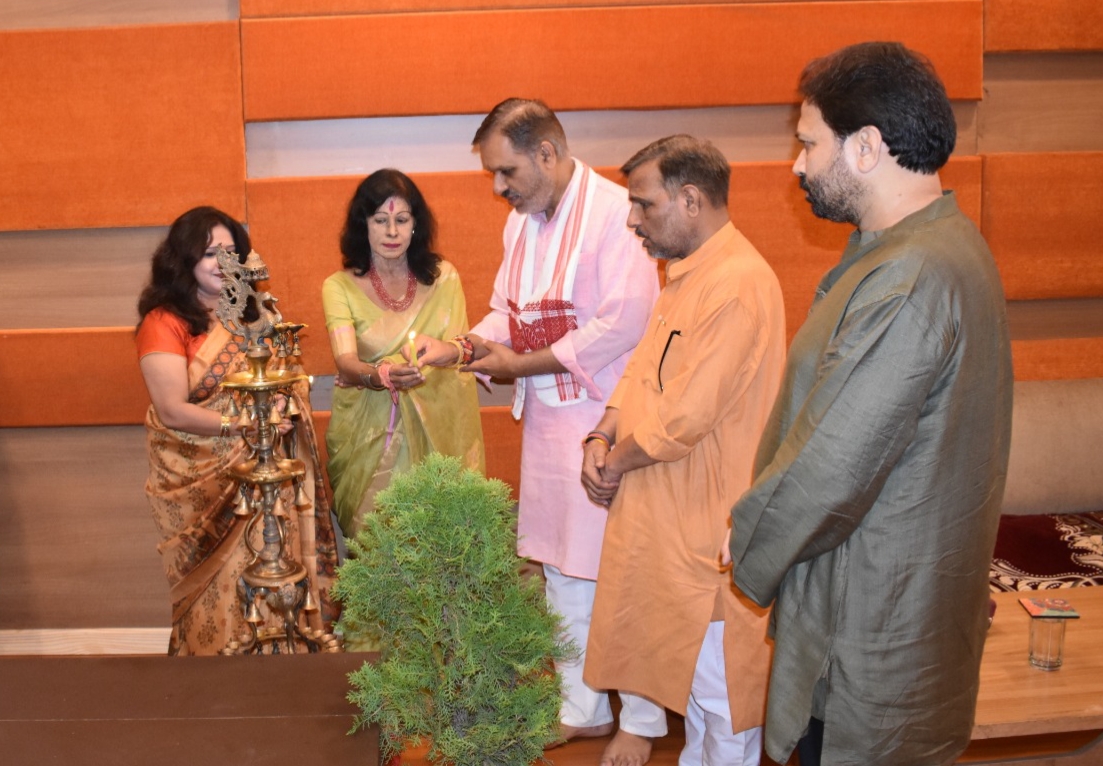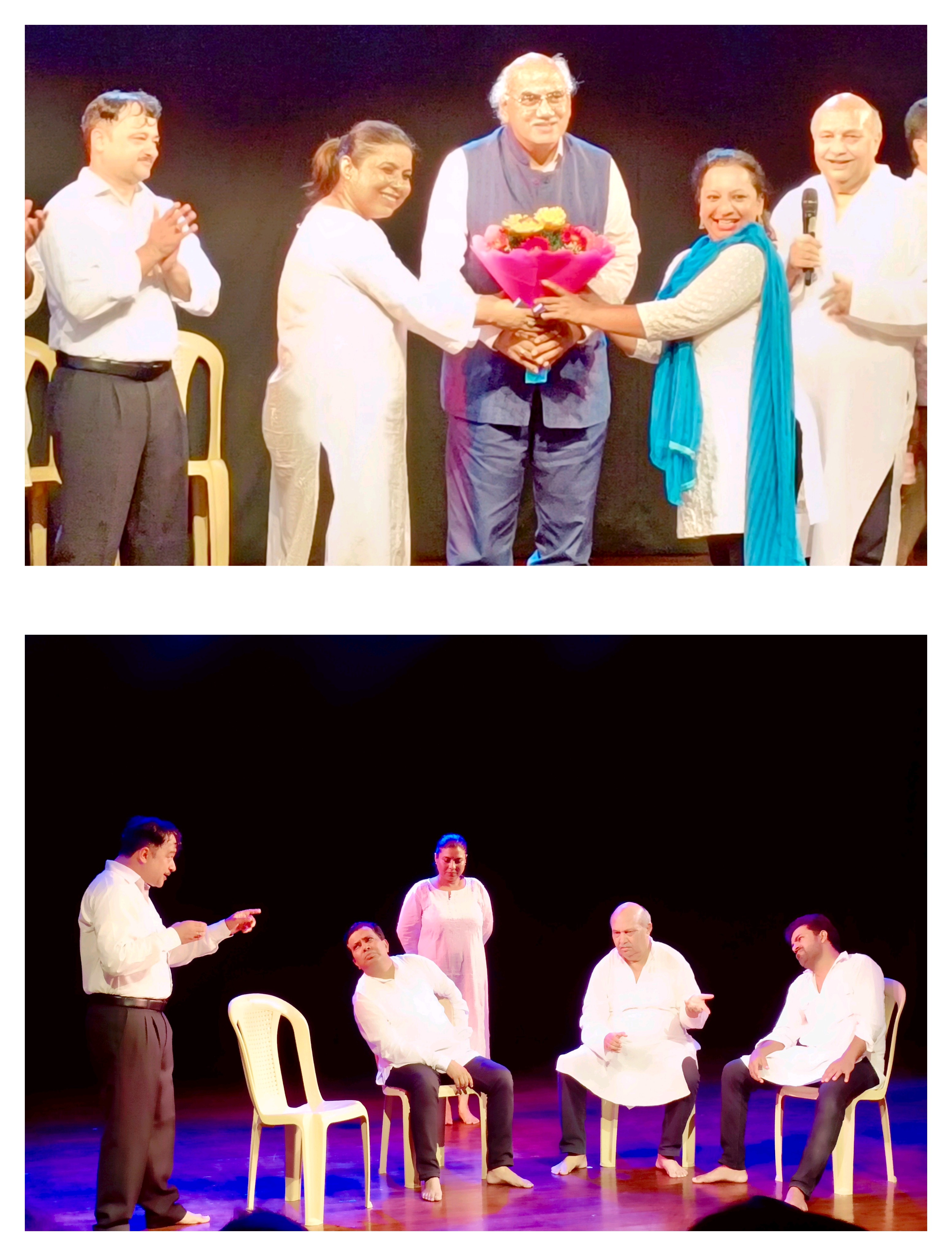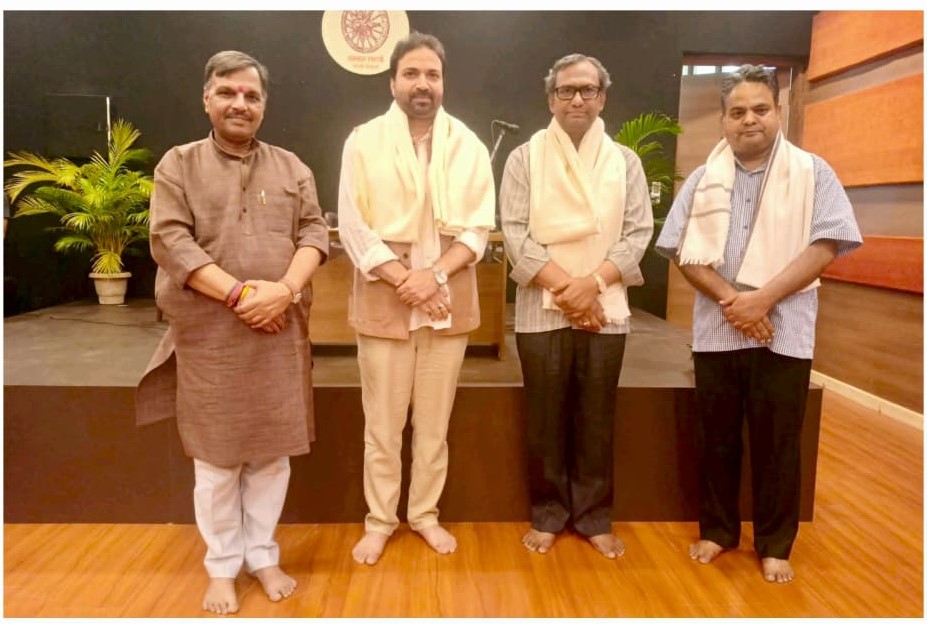Dance Tribute at Kala Sankul: A Divine Confluence of Navaras and Navadurga

On 28th September, 2025, at the auspicious time of the festive season, the monthly stage art symposium organized under the aegis of Sanskar Bharati transformed the Kala Sankul premises in New Delhi into a vibrant cultural celebration. The theme “Navaras and Navadurga: Harmony of Emotion, Devotion and Art” brought together diverse performances and reflections that illuminated the depth and spiritual essence of Indian culture.
The evening commenced with the lighting of the ceremonial lamp by Padma Shri Shovana Narayan, whose presence added grace and solemnity to the occasion. The aura was filled with devotion and beauty, as though the blessings of Goddess Durga herself sanctified the gathering.
The first performance came from Sh. Abdul Khalid, whose Kuchipudi presentation vividly portrayed the essence of the nine sentiments (navaras). Following this, Ms. Muskan Nagpal enthralled the audience with her Kathak recital, embodying the nine divine forms of Goddess Durga. Her mastery of rhythm, expression, and movement captivated the audience, drawing prolonged applause that resonated throughout the auditorium.
In her keynote address, chief guest and veteran Kathak danseuse Padma Shri Shovana Narayan remarked:
“Art is not merely a medium of expression; it is a bridge that unites emotion, devotion, and social consciousness. The union of Navaras and Navadurga is a living testimony to the vastness and profundity of Indian culture.”
Her words inspired the gathering to reflect deeply on the spiritual and cultural dimensions of art.
Art connoisseurs, students, and intellectuals in attendance experienced a rare blend of Indian classical dance and the spiritual power of culture. The performances were met with appreciation and admiration, leaving an indelible impression on all.
The Kala Sankul family of Sanskar Bharati expressed gratitude to the participants and guests, affirming that such events would continue to be organized regularly, preserving and promoting the invaluable heritage of Indian art and culture.
The event was successfully coordinated by Sneha Mukherjee, with stage comparing by Garima Rani and a gracious vote of thanks by Shruti Sinha. Valuable contributions were also made by Raj Upadhyay, Senior Announcer Bharti Dang, tabla maestro Pradeep Pathak, O P Sagar along with Harshit Goyal, Raman Kumar, Mrityunjay, Faizy Abdul Kalam, Lavanya, Brajesh, Satyam and others, whose collective efforts added grandeur to the evening.
Ultimately, the symposium held on 28th September, 2025 emerged as a spiritual dance offering to Goddess Durga, leaving the audience with a sense of fulfillment and cultural pride.









